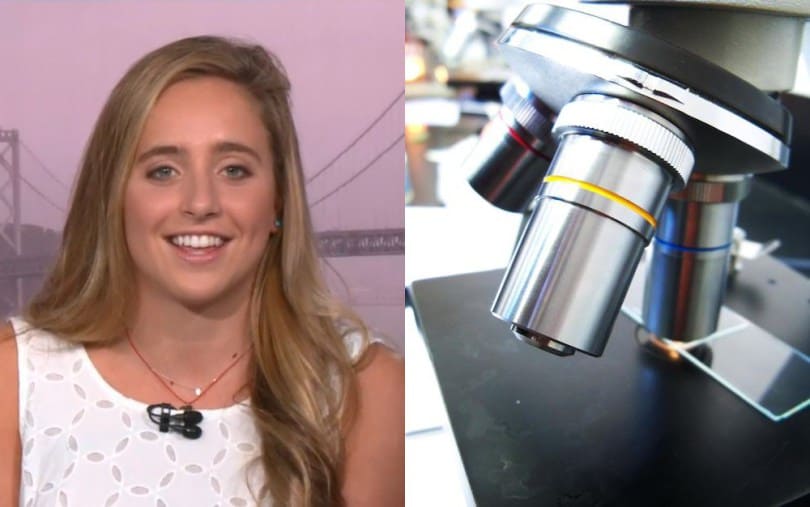After reading several reports of how quickly Ebola was spreading through Guinea, Sierra Leone, and Liberia last year, 17-year-old Olivia Hallisey decided to get involved and develop a faster and more efficient way to diagnose the disease.
Scientific American reports that the teen from Greenwich, Connecticut began reading diagnostic reports – with support from her high school science teacher – and quickly discovered that many methods exist to detect Ebola, but require electricity and refrigeration. Both of these luxuries are rare in rural African villages, as well as take hours or days to return results.
By the time an individual receives their diagnosis, they could be on their death bed and have already spread the virus to someone else.
“The best way to limit Ebola’s spread is if you can isolate someone before they’re contagious,” said Olivia.
For this reason, it became the teen’s ambition to invent a new way to test for the Ebola virus without refrigeration or electricity.
Hallisey began by researching a silk fiber derivative that can keep proteins stable without refrigeration. Common tests like the ELISA, on which Olivia based her project, rely on mixtures of protein and water to trigger the chemical reactions that lead to positive or negative results. These solutions, known as reagents, typically need to be refrigerated. But Olivia used the silk derivative to make her reagents and found that the test performed just as well after one week with no refrigeration.
The next step was to scrap the ELISA’s plastic well-plate design and mount test strips on a laser-cut paper card that is portable, simple to read, and returns results within 30 minutes.

Olivia’s family supported the project, with her father driving her to Boston at least 10 times so she could use a laser cutter Tufts made available.
“We would get up early some mornings, get to Boston about 10, use the laser cutter, and then run home so I could get to swim practice on time,” she said.
All the effort was worth it, however. The potentially life-saving invention, which has huge ramifications for rural areas in other countries most profoundly infected by Ebola, won the grand prize at the Google Science Fair in September. In addition to receiving that honor, Olivia was gifted $50,000 in scholarship funds.
“She did what I love to see and what I find so inspiring: She looked at what exists and then took a leap,” said Mariette DiChristina, editor-in-chief and senior vice president of Scientific American and chief judge at the Google Science Fair.
TIME Magazine also recognized Olivia’s achievement and listed her as one of the Most Influential Teens In 2015. Among those honored are social media stars, actresses from Game of Thrones and Modern Family, and the Jenner sisters (Kylie and Kendall).
What are your thoughts on this news? Comment below and share this article!
This article (17-year-old Student Discovers Better Way To Diagnose Ebola, Honored By TIME Magazine) is free and open source. You have permission to republish this article under a Creative Commons license with attribution to the author and TrueActivist.com


